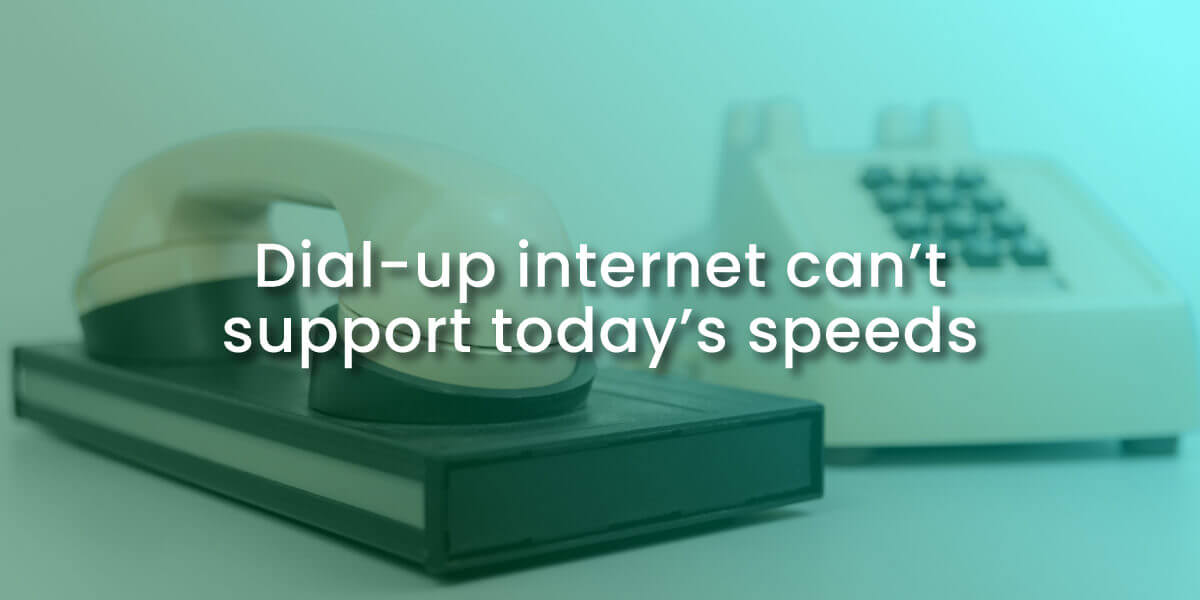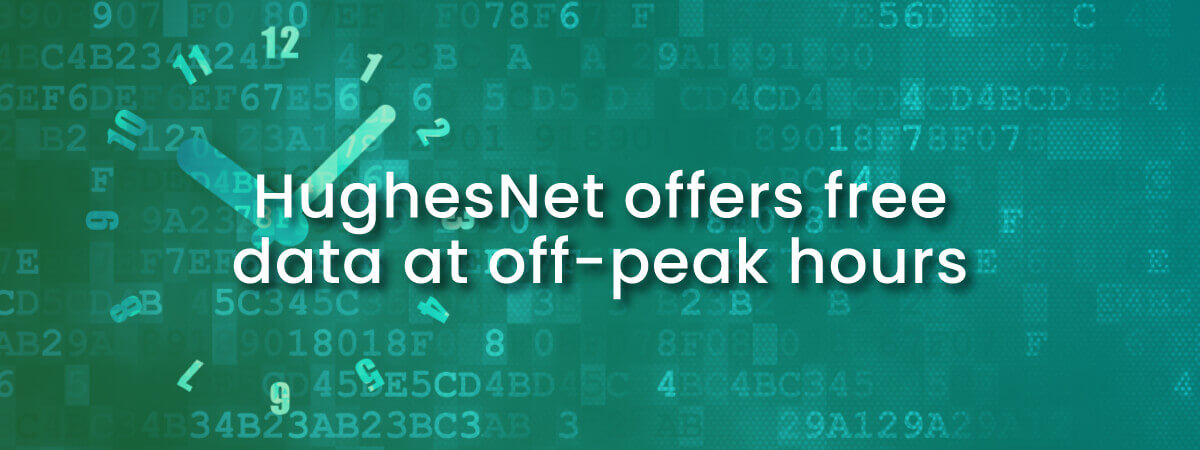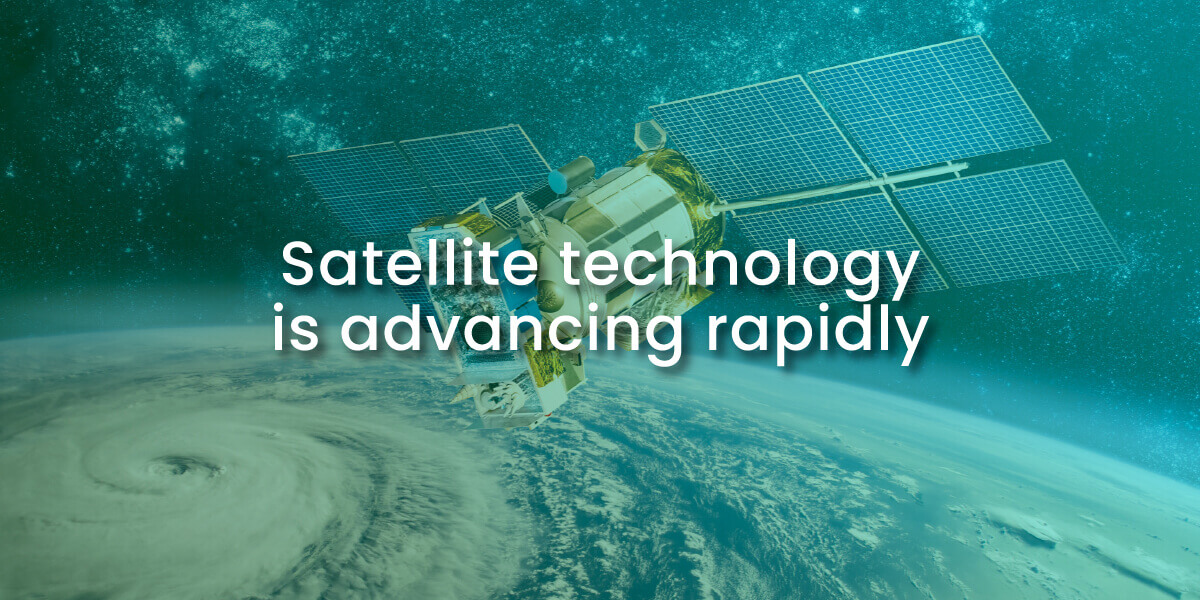Overcoming the Challenges of Rural Internet Access
Table of Contents
Cities, suburbs, and other densely populated areas have plenty of internet options available for residents. It’s profitable for wired internet service providers to lay cable in places with lots of future customers.
When everyone in a city lives close together, customers can share wires and hubs. Many cities also have access to fixed wireless internet through 5G and 4G LTE. Both technologies transmit through towers with short signal ranges. Those short ranges of 1-5 miles mean that ISPs are motivated to build wireless towers in dense areas filled with customers.
All these internet choices are great for cities, but what about rural Internet? Unfortunately, laying Internet cable is often impractical in rural areas. ISPs would have to install so much cable or fiber over such a long distance that it costs too much. There just aren’t enough customers to pay back the cost of infrastructure.
Some remote areas are too steep to even get the wires in. Over the decades since the internet began, telecom companies have sometimes had to use mules to carry fiber into the mountains. Areas surrounded by water can also be difficult to reach with towers or wires.
These challenges of rural living leave few options for rural areas to get high-speed Internet. But rural internet access is improving every year, and in most rural households in the USA, you will have at least one very solid internet option.
Who Are Rural Customers?
Rural customers may be farmers or ranchers, truckers or miners. Some might work in factories or paper mills. Their work often helps feed, clothe and supply the rest of the nation. And of course, rural areas have their own doctors and bankers and artists and writers. Many people in rural areas now work remotely in professions that once only existed in big cities: advertising, IT, counseling or law.
Rural internet activities can vary as much as the jobs of rural residents. But one thing is clear. Getting access to high-speed internet in rural areas is essential. Internet connections are as vital for the farmer, trucker, and remote worker as for anyone living in a city or populous town. In fact, broadband internet access may even be more important in remote areas to keep people connected to the economy and long-distance friends.

Why Is Internet Important?
In 2023, we do everything online. Job applications happen online. Schooling options are multiplying online. Even vital services like banking and government agencies are based online. In many rural places, brick-and-mortar office for the DMV or Social Security might be fifty miles away or even on the other side of the state. Now, most requests can be handled online without a visit to the office.
Telemedicine has moved doctors and other healthcare providers online too. May medical needs can be handled through a videoconference call, which is great for rural people far from hospitals and clinics.
For many rural areas, retail outlets are limited. Choices in shopping are few, and prices may be higher. Online retail stores allow rural customers a much wider range of products, and often better deals.
What Are the Alternatives to Satellite Internet?
For today’s internet users, dial-up internet can’t provide a good internet connection. Most Internet sites are developed for a minimum of 4G LTE technology, which means you need a minimum of 1Mbps download speed to access them. Even the best dialup delivers only half that speed. The FCC standard for high-speed internet is 25 Mbps download, 3 Mbps upload. Clearly, a speed under 1 Mbps is not designed for today’s internet. Plus, dial-up wiring doesn’t provide internet infrastructure in many rural areas.
Are there any other rural internet options for remote locations?
Many people substitute the mobile hotspots on their cell phones for Internet access on devices, or simply use their cell phones. But as you will know if you’ve ever driven through a rural area, cell phone wireless is unreliable.
Rural areas have fewer cell towers. You may be too far from a tower to be able to use your hotspot.
Hotspots also consume a lot of data from your cellular data plan. Browsing the Internet directly from your phone also eats up a lot of data. Even cell phone users with “unlimited data” may find themselves deprioritized after they pass a certain limit. Deprioritizing means you will lose useful internet speed and may be only able to check messages. So in a rural area, you can lose your cell phone’s internet signal or speed for many reasons.

Why Choose Satellite Internet?
The best rural Internet service is satellite, and America’s #1 choice for satellite Internet is Viasat.
Internet service areas in urban locations are extended through the use of hubs. Rural residents are too spread out to use hubs, but satellite Internet makes your home into your personal hub.
Instead of having wires, cables and hubs connecting you to high-speed Internet, you only have a satellite and a transmission station. Your Internet signal bounces back and forth from space to earth. All you need is a clear view of the southern sky. That clear sky allows your satellite dish to communication with geosynchronous satellites. As their name implies, these satellites are timed to orbit at the same rate as the Earth, which means they are always in the same place relative to your house.
Unlike cables or towers, satellites cannot be disrupted by construction or other human activity. Satellites will not be destroyed by a natural disaster on Earth.
Satellite technology means you can have high-speed Internet without having to connect to cable, DSL, or fiber. Satellite Internet can provide your home or business with the speed you need to access today’s Internet. And Viasat can give you reliable satellite Internet at the right price. That’s why Viasat is America’s #1 choice for satellite Internet according to U.S. News and World Report.
What About Wi-Fi?
In-home Wi-Fi networks are important to most American households because of the rise of devices like smartphones, tablets, gaming consoles, and laptops. Even our TV sets and thermostats can use Wi-Fi to make our lives simpler.
Satellite Internet from Viasat provides a fixed Wi-Fi network in your home the same way cable, fiber or DSL does. The router that connects your computer to the satellite also connects your entire home to Wi-Fi, no matter where you live or run your business.

Don’t Be Afraid of Data
Data caps are an allowance giving you a certain amount of data usage each month with your internet plan. Data caps exist in both wired, fixed wireless, and satellite internet service. Satellite internet plans have to set data limits because there is one satellite serving many people, and data allowances ensure that every customer gets a fair share of that data. The good news is that data caps aren’t what they used to be. Many helpful tools now help you make the most of your data.
Ten years ago, if you ran out of data, many internet providers would shut down your connection until the next billing cycle. No provider cuts your connection completely anymore, but your speeds will slow down if you exceed your data limit. Fortunately, satellite Internet provides numerous ways to manage data, including “free” data usage hours, and extra data for sale at reasonable rates.
Satellite internet plans vary in the data limits they offer. Data is measured in gigabytes (GB) to indicate how much information passes through your computer. Most data comes from downloads, as information is sent to your computer from websites and other services. But data usage can also come from your uploads.
Any time you send information from your computer to the Internet, you are uploading. For most home users, uploads are usually very small, but video chat for home or business uses a lot of data. Uploading graphics or video will also burn data. Finally, the more devices are online in your home, the more data usage will add up. But there are solutions to help you manage your data successfully on satellite Internet.
“Free hours” at nonpeak times offer customers data usage that doesn’t count against plan limits. You can schedule big downloads and updates without using your plan data. Each company has its own brand name and designated hours for this period. For example, Viasat has the most free hours in their Bonus Zone, which lasts from 2 a.m. to 8 a.m. each day.
You can also add to your plan data by purchasing more GB at the end of the month for a fee. Prices vary from company to company, so extra data can be an important budget factor. You may exceed even the highest data limits available depending on your activities and the number of devices you have online. If you are a heavy data user, affordable extra data is an important complement to your data plan. Viasat’s Data Tokens provide extra data at an affordable price, so even if you exceed the data on your plan, topping off won’t break the bank.

Myth-busting Satellite Internet
Some myths about satellite internet are still around from many years ago. Back then, strong winds could displace large home satellite dishes. Cloud cover could scramble signals, which were slow for the Internet. But satellite technology has greatly advanced, improving satellite Internet in three ways.
- Home satellite dishes have become smaller. A home Internet satellite dish is only about four feet in diameter. The smaller size and aerodynamic design of Viasat satellite dishes avoid the effects of non-catastrophic winds.
- Satellite communications previously used radio waves in the K-bands, which couldn’t penetrate water vapor, but modern satellites use Ku-bands because they can get through thick clouds and storms.
- Throughput has increased significantly. Throughput is the speed at which data travels back and forth from the satellite. Viasat Gen 5 uses cutting-edge Jupiter System technology to enhance throughput on their latest satellites. As throughput technology has improved, satellite Internet has gotten faster, enabling broadband speeds.
Viasat is the Best Option to Make Rural Broadband Work for You
People who live far away from population centers still need the services the Internet makes available. Satellite Internet provides the most reliable option for homes and businesses in rural or remote areas, and Viasat is the best wireless high-speed Internet provider.
You can have high-speed Internet without having to sacrifice the beauty, peace, and affordability of the rural life. Bank online, get a remote job, or pursue your education: all internet doors are open to you with Viasat service.


